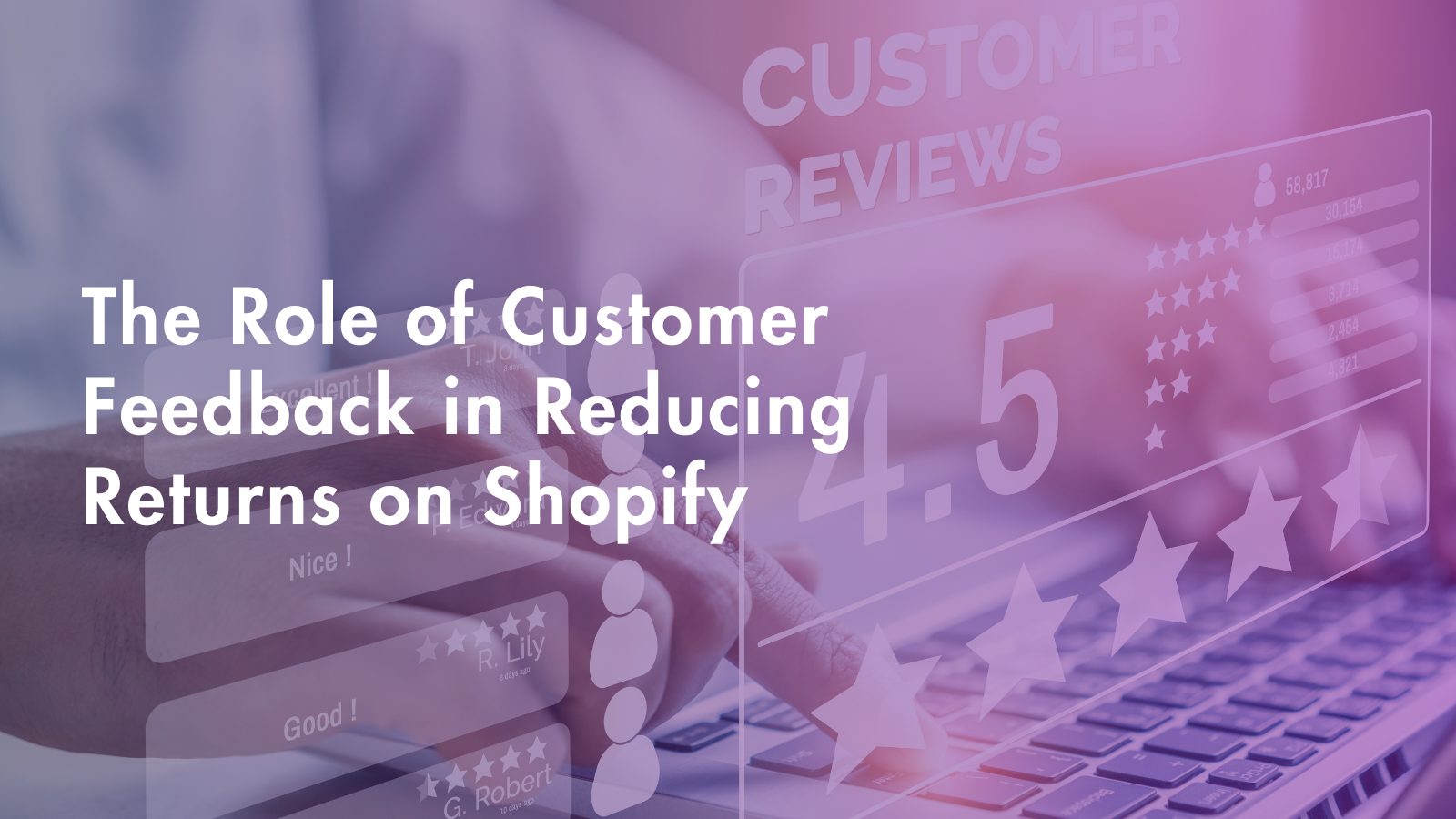Returns are an inherent aspect of the e-commerce landscape, constituting a significant portion of online transactions. According to industry research, approximately 30% of all online purchases are returned, representing both a challenge and an opportunity for businesses operating on platforms like Shopify.
The staggering frequency of returns might initially seem daunting to merchants, with concerns about revenue loss and operational complexities looming large. However, a closer examination reveals that returns can be reframed as a strategic asset rather than a liability. By understanding customer behavior, analyzing data effectively, and implementing targeted strategies, businesses can harness the power of returns to drive growth, enhance customer satisfaction, and cultivate brand loyalty.
We’ll dive into the best practices, methods, and strategies in this in-depth guide to help you understand the full potential of returns on Shopify. Each section will offer helpful insights and doable actions to support you on your path, from gathering useful feedback to customizing the returns experience and developing trust with your consumers.
1. Understanding Customer Needs and Preferences to reduce Returns on Shopify:
Feedback Collection Methods for Returns Insights:
- Employ feedback collection methods that specifically target insights related to returns, such as post-return surveys or follow-up emails after return requests.
- Utilize Shopify’s built-in order management system to gather feedback at various touchpoints in the returns process, including return initiation, return shipping, and refund processing.
Data Analysis and Segmentation for Returns Patterns:
- Analyze return-related data collected through Shopify’s reporting and analytics tools to identify patterns and trends in return reasons, return frequencies, and customer demographics.
- Segment customers based on return behavior, such as frequent returners versus one-time returners, to tailor strategies for reducing returns and improving customer satisfaction.
Identifying Pain Points in the Returns Process:
- Focus on identifying pain points specific to the returns process, such as complicated return procedures, lengthy return shipping times, or unclear return policies.
- Gather feedback from customers who have initiated returns to understand their experience and pinpoint areas for improvement in the return’s workflow.
2. Improving Product Descriptions and Transparency:
Incorporating Return-related Information into Product Descriptions:
- Enhance product descriptions with details related to returns, such as sizing charts, fit guides, and material descriptions, to minimize returns due to incorrect product expectations.
- Clearly communicate return policies, including return windows, return shipping instructions, and refund processing times, within product descriptions to set accurate expectations for customers.
User-Generated Content for Returns Insights:
- Encourage customers to leave reviews or provide feedback specifically related to returns experiences, such as ease of return initiation, return shipping costs, or satisfaction with the return process.
- Highlight user-generated content, such as return-related testimonials or success stories, to reassure potential buyers about the ease and convenience of returning products on Shopify.
Visual Enhancements for Return-related Information:
- Utilize visual elements, such as infographics or diagrams, to illustrate return policies and procedures visually within product descriptions, checkout pages, or FAQ sections.
- Include images or videos demonstrating how to package and return products on Shopify to alleviate concerns about the return shipping process.
3. Enhancing Product Quality and Performance:
Feedback Monitoring Systems for Return-related Issues:
- Implement systems to monitor feedback related to product quality issues that may lead to returns, such as defects, damages during shipping, or discrepancies between product descriptions and received items.
- Set up alerts or notifications for return-related feedback to enable swift action in addressing product quality issues and preventing future returns.
Supplier and Manufacturing Relationships for Return Reduction:
- Strengthen relationships with suppliers and manufacturers to address product quality issues at the source and minimize returns resulting from manufacturing defects or subpar materials.
- Collaborate with suppliers to improve packaging and shipping processes to reduce the likelihood of products arriving damaged or in poor condition, thereby decreasing return rates.
Continuous Improvement through Returns Feedback:
- Use feedback collected from returns to drive continuous improvement in product quality and performance, such as redesigning products based on common return reasons or updating product specifications to align with customer expectations.
- Leverage Shopify’s order management features to track returns data and analyze return trends over time, allowing for informed decision-making and proactive measures to reduce returns.
4. Personalizing the Shopping Experience:
Data-driven Insights for Tailored Returns Experiences:
- Leverage data analytics to personalize the returns experience for customers based on their past purchase history, return behavior, and preferences.
- Use Shopify’s customer segmentation capabilities to create targeted messaging and offers related to returns, such as personalized return instructions or exclusive return perks for loyal customers.
Segmentation Strategies for Targeted Returns Solutions:
- Segment customers into groups based on return behavior, such as frequent returners, size-exchange customers, or first-time returners, to tailor returns solutions and communication approaches accordingly.
- Implement dynamic content and product recommendations on Shopify’s storefront to showcase products with lower return rates or highlight return-friendly features based on customer segments.
Automation and AI Tools for Streamlined Returns Processes:
- Utilize automation and AI-powered tools to streamline the returns process on Shopify, such as automated return labels, chatbots for return inquiries, or predictive analytics for anticipating return requests.
- Integrate Shopify with third-party apps or services that specialize in returns management and optimization to enhance the efficiency and effectiveness of returns handling.
5. Building Trust and Loyalty:
Responsive Communication for Positive Returns Experiences:
- Prioritize responsive communication with customers throughout the returns process to provide updates, address concerns, and ensure a positive returns experience.
- Utilize Shopify’s communication features, such as order status notifications and automated email sequences, to keep customers informed and engaged during the returns journey.
Transparency and Honesty in Returns Policies:
- Maintain transparency in returns policies and procedures, including clear explanations of return eligibility criteria, return shipping costs, and refund timelines, to build trust and confidence with customers.
- Display return-related information prominently on Shopify’s storefront, including dedicated returns policy pages, FAQ sections, and pop-up messages during the checkout process, to reassure customers about the ease and fairness of returning products.
Customer Engagement Initiatives for Positive Returns Outcomes:
- Implement customer engagement initiatives that emphasize positive returns outcomes, such as hassle-free returns, no-restocking-fee policies, or extended return windows, to incentivize repeat purchases and foster loyalty.
- Solicit feedback from customers who have completed returns to gather insights on their overall satisfaction with the returns experience and identify opportunities for improvement or innovation.
In conclusion, Returns don’t have to be a headach, they can be a strategic advantage. By understanding customer needs, analyzing data, and optimizing your processes, you can turn returns into a powerful driver of growth for your Shopify store.



